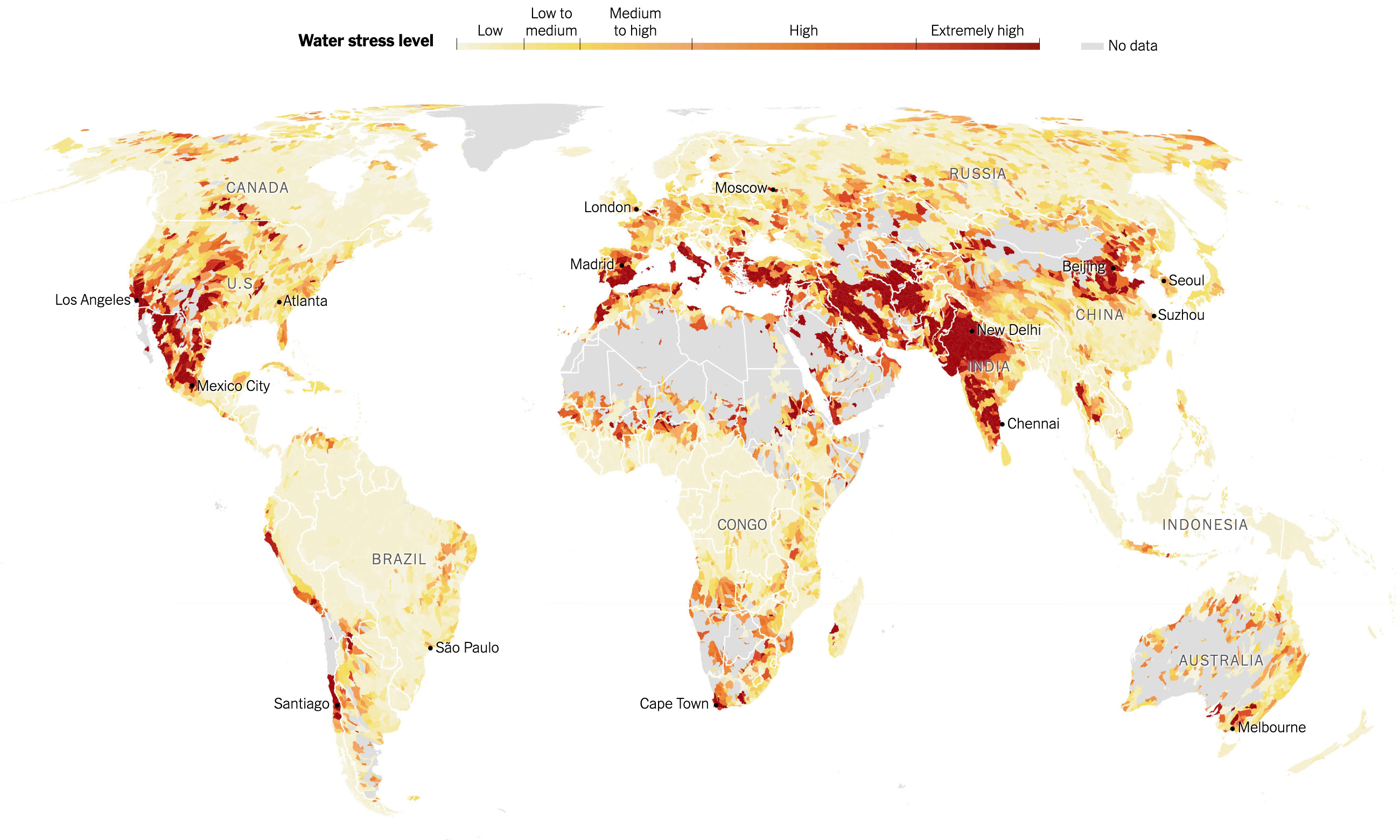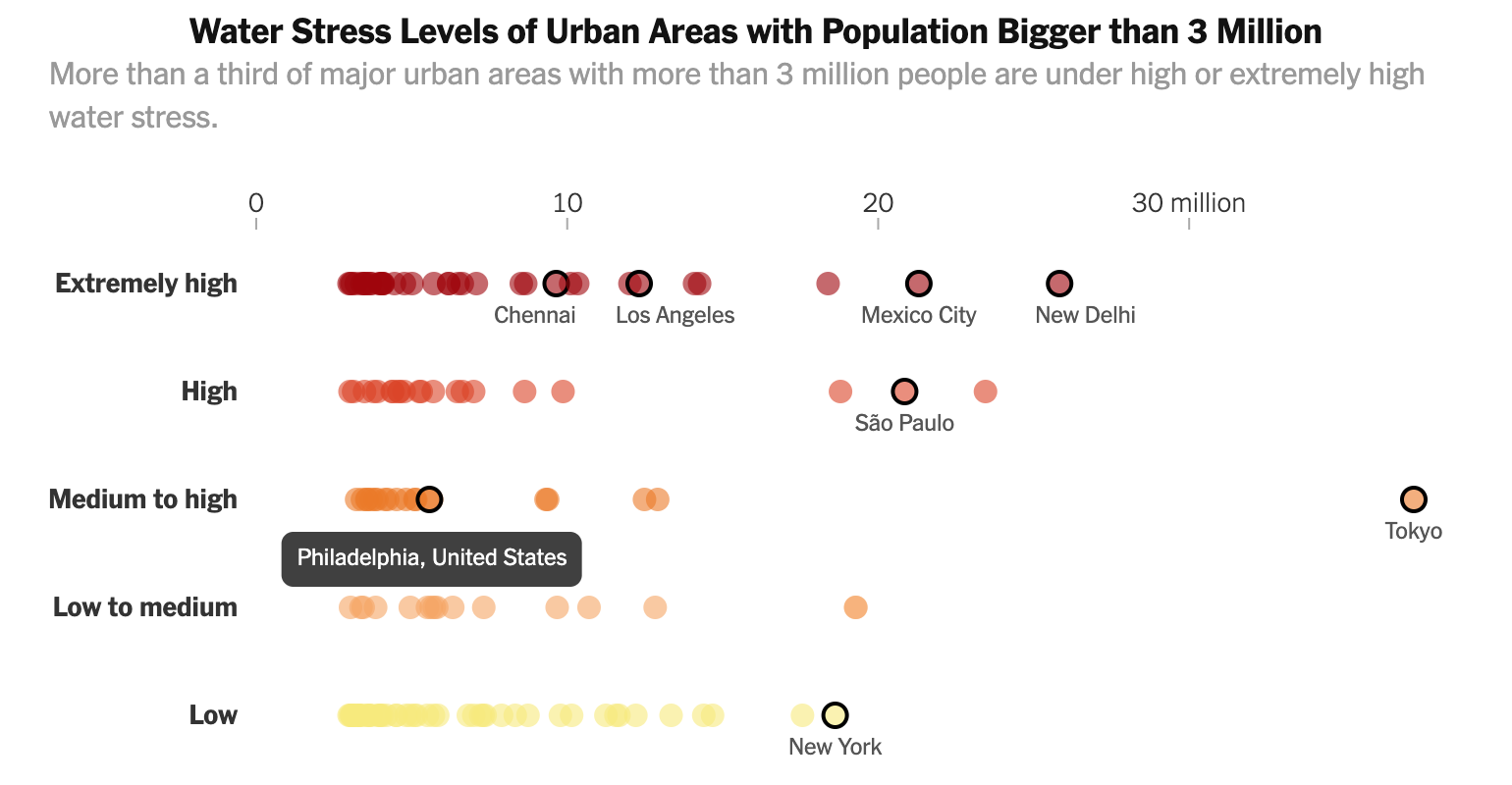Most of Earth’s surface is covered by water. But, as any of you who have swallowed seawater can attest, it is not exactly drinkable. Instead, mankind evolved to drink freshwater. And as some new data suggests, that might not be as plentiful in the future because some areas are already under extreme stress. Yesterday the New York Times published an article looking at the findings.

The piece leads with a large map showing the degree of water stress across the globe. It uses a fairly standard yellow to red spectrum, but note the division of the labels. The High range dwarfs that of the Low, but instead of continuing on, the Extremely High range then shrinks. Unfortunately, the article does not go into the methodology behind that decision and it makes me wonder why the difference in bin sizes.
Of course, any big map makes one wonder about their own local condition. How stressed is Philadelphia, for example? Thankfully, the designers kept that in mind and created an interactive dot plot that marks where each large city falls according to the established bins.

At this scale, it is difficult to find a particular city. I would have liked a quick text search ability to find Philadelphia. Instead, I had to open the source code and search the text there for Philadelphia. But more curiously, I am not certain the graphic shows what the subheading says.
To understand what a third of major urban areas is, we would need to know the total number of said cities. If we knew that, a small number adjacent to the categorisation could be used to create a quick sum. Or a separate graphic showing the breakdown strictly by number of cities could also work. Because seeing where each city falls is both interesting and valuable, especially given how the shown cities are mentioned in the text—it just doesn’t fit the subheading.
But, for those of you from Chicago, I included my former home as a different screenshot. Though I didn’t need to search the source code, because I just happened across it scrolling through the article.

Credit for the piece goes to Somini Sengupta and Weiyi Cai.

One thought on “Water, Water Everywhere Nor Any Drop to Drink”